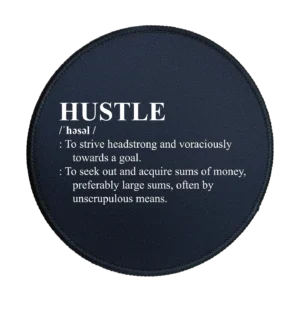In the bustling world of B2B (business-to-business) transactions, the concept of Net 30 payment terms often steals the spotlight. Picture it as an intricate dance where suppliers extend a 30-day credit line to their customers. This means customers can receive goods or services today but have up to 30 days to complete the payment.
While Net 30 terms can be alluring, offering the potential for increased sales and customer loyalty, they also present challenges that can put a supplier’s financing stability to the test.
Managing cash flow optimization, handling late payments, and keeping track of accounts become crucial tasks in this delicate dance. For suppliers, the key lies in navigating this territory with smart strategies and proactive approaches.
Understanding Net 30 Payment Terms
Definition and Overview
At its core, Net 30 payment terms serve as a financial agreement between suppliers financing and their customers in the B2B realm. This straightforward but potent agreement allows customers a 30-day window from the time goods or services are delivered to settle their invoices.
It acts as a form of short-term credit, wherein suppliers deliver their goods or services without immediate payment, giving buyers a grace period to recollect funds and maintain their cash flow.
For many businesses, Net 30 represents a key aspect of managing their financial operations, but it requires both parties to trust and reliable payment systems.
Appeal for Suppliers Financing
From the supplier’s financing perspective, offering Net 30 terms has a range of enticing benefits. This arrangement can make suppliers more attractive to potential clients, particularly small businesses or startups, who often grapple with cash flow constraints.
By allowing these companies the ability to delay payment without immediate financial burdens, suppliers can foster a stronger customer base. In a marketplace where competition is fierce, such flexibility can make a supplier stand out, cater better to customer needs, and potentially drive an increase in sales.
Moreover, offering Net 30 terms is not simply about immediate sales—it can be a strategic move aimed at nurturing long-term relationships. These payment terms act as a trust signal, indicating that suppliers are committed to supporting their customers’ success. Over time, this can lead to enhanced customer loyalty, more repeat business, and even positive referrals, which are invaluable for sustainable business growth.
Benefits of Net 30 Terms
Expanding Customer Base
One of the most significant advantages of Net 30 terms is the potential for expanding the customer base. By offering a 30-day payment cycle, suppliers become accessible to a broader array of businesses, including those that may have previously been unable to purchase due to immediate payment restrictions.
This accessibility not only opens doors to new market segments but also diversifies the supplier’s portfolio, making it less reliant on a single customer type or industry. In essence, Net 30 terms can be a powerful tool for market expansion and penetration.
Competitive Advantage
In today’s business world, standing out in a crowded market is crucial. Suppliers that provide flexibility through Net 30 terms gain a competitive edge. These terms signal that the supplier understands the financial challenges businesses face and offers a practical solution to alleviate them.
It can be particularly appealing to businesses looking for suppliers who are flexible and supportive partners in their growth journey. Suppliers can differentiate themselves from competitors who may adhere to stricter payment terms. This can lead not only to increased sales but also to stronger negotiating power and better positioning in the market.
Building Customer Trust and Loyalty
The decision to extend Net 30 terms is as much about relationships as it is about financial strategy. By providing customers with a financial buffer, suppliers communicate trust and confidence in their client’s ability to fulfill payment obligations.
This can be crucial in building a foundation of trust which, over time, can blossom into loyalty and commitment. Loyal customers are more likely to return, recommend the supplier to others, and contribute to a steady flow of business.
Moreover, this trust can create a ripple effect. As suppliers demonstrate their reliability and flexibility, customers are often more willing to engage in open communication, which can result in more stable and predictable cash flows.
It also instills a sense of partnership, wherein both parties work collaboratively toward shared success, overcoming challenges together rather than in isolation.
In conclusion, Net 30 payment terms offer suppliers distinct advantages, including the ability to expand their customer base, gain a competitive edge, and build lasting relationships.
While there are inherent risks, with informed strategies and clear communication, these terms can pave the way for growth, trust, and mutual success in the ever-evolving business landscape. Providing a balance between opportunity and risk, Net 30 stands not just as a financial instrument but as a strategic ally for suppliers looking to thrive.
Challenges Faced by Suppliers
Net 30 payment terms, while offering enticing opportunities, present a variety of challenges that suppliers must carefully manage to maintain financial stability and operational efficiency.
Cash Flow Strain
When suppliers agree to Net 30 payment terms, they effectively consent to waiting 30 days (or sometimes longer) to receive payment for goods or services rendered.
Although this arrangement can be beneficial for attracting customers, it also strains cash flow. Imagine this scenario: a supplier delivers products or services and promptly invoices the buyer.
However, the payment won’t arrive for another month. During this waiting period, the supplier still has to meet financial obligations like salaries, rent, utilities, and stocking inventory. This delay transforms into a challenging tightrope walk, trying to balance incoming and outgoing cash.
For businesses with narrow profit margins or a reliance on consistent revenue streams, even a slight delay can cause significant financial discomfort.
Risks of Late Payments and Bad Debts
The risk of late payments or non-payment is an ever-present concern for suppliers offering credit terms. Despite careful credit checks and nurturing positive relationships, there’s always the chance of payment delays or defaults.
Late payments aren’t just inconvenient; they can also lead to financial strain, affecting everything from budgeting to meeting one’s own financial commitments.
Furthermore, if payments are excessively delayed or entirely abandoned, suppliers might face the harsh reality of bad debts, meaning they’ll need to write off income they had anticipated. These issues underscore the importance of careful risk management and proactive customer assessment.
Administrative Burden
Managing Net 30 payment terms demands significant administrative effort. From generating and sending invoices, tracking payments, and managing accounts receivable, to chasing after overdue invoices, the administrative load can become overwhelming.
Smaller businesses might find themselves particularly challenged, as these tasks can siphon valuable time away from core activities like product development, customer service, or sales.
Even with the best systems in place, the administrative requirements associated with Net 30 terms can gradually erode profitability by consuming time and resources that might be better invested elsewhere.
Strategies for Mitigating Risks
Despite the challenges, suppliers have several strategies they can employ to mitigate the risks associated with Net 30 payment terms. By adopting proactive measures, suppliers can navigate these waters more effectively, ensuring stability and fostering positive customer relationships.
Conducting Credit Checks
One of the most effective ways to minimize risk is by conducting thorough credit checks before extending credit. This step involves evaluating a potential customer’s financial health, payment history, and creditworthiness to assess the likelihood of timely payment.
Think of this diligence as a form of insurance that protects against bad debts. Credit reports from reputable agencies provide detailed insights into a customer’s payment behaviors and help suppliers make informed decisions about which customers to offer Net 30 terms. This information arms suppliers to choose wisely, managing trade relationships with confidence.
Clear Communication and Transparency
Effective communication is the cornerstone of successful business dealings, and when it comes to Net 30 terms, clarity is crucial. Suppliers should set clear expectations by explicitly stating payment terms, potential penalties for late payment, and other details on invoices and contracts.
It’s about creating a mutual understanding and setting ground rules to avoid misunderstanding and disputes down the line. When both parties are fully aware of the expectations, it fosters a sense of transparency and professionalism, strengthening the trust and reliability that defines a healthy business relationship.
Implementing Late Fees and Discounts
Suppliers can mitigate late payment risks through financial incentives and penalties. Implementing late fees or interest charges into agreements serves to encourage timely payments, offering a financial deterrent against delay. This gentle nudge helps recoup administrative costs, cash flow disruptions, and other inconveniences that result from waiting on delayed payments.
Conversely, offering early payment discounts can actively motivate customers to pay invoices ahead of schedule. These small incentives—a proverbial carrot rather than a stick—reward punctual payments, thus improving the supplier’s cash flow and reinforcing positive customer relationships.
In summary, while extending Net 30 payment terms comes with its own set of challenges, suppliers can successfully manage these dilemmas with strategic planning and proactive approaches. By conducting due diligence, maintaining crystal-clear communication, and leveraging financial incentives, suppliers financing can harness the full potential of Net 30 terms, paving a path to sustainable growth and fortified customer ties.
Leveraging Financial Solutions

In the realm of Net 30 payment terms, suppliers can find creative financial solutions to alleviate the challenges of cash flow management. By strategically leveraging these tools, businesses can maintain their operational stability while enhancing customer relationships.
Exploring Factoring and Invoice Financing
Factoring and invoice financing are like financial lifelines for suppliers working under Net 30 terms. These solutions offer swift access to cash by allowing businesses to sell their outstanding invoices at a discount to third-party financial institutions. It’s akin to receiving a cash advance on sales you’ve already made, without waiting for customers to pay.
– Factoring: With factoring, the financial institution buys the supplier’s invoices and assumes the responsibility of collecting payments. Suppliers get immediate funds — sometimes up to 90% of the invoice value — which can be crucial for covering expenses or investing in growth.
– Invoice Financing: Unlike factoring, with invoice financing, the supplier retains control of the invoices and is responsible for collecting payments. The financing, in this case, comes in as a loan based on the value of the invoices.
Both options come with their respective costs but can provide a much-needed liquidity boost, allowing businesses to continue thriving even before customers pay up.
Embracing Technology for Efficiency
Technological advancements offer powerful tools to streamline processes, freeing suppliers from the tangle of manual administrative tasks. Here’s how embracing technology can transform the Net 30 workflow:
– Automated Invoicing and Payment Tracking: Set up systems that handle invoice generation, track payments in real-time, and send automated reminders to customers about upcoming due dates. This ensures that nothing slips through the cracks and reduces the potential for human error.
– Digital Payment Portals: By offering customers an easy way to pay invoices online, suppliers can speed up the payment process. Digital platforms facilitate quicker transactions, helping bridge potential cash flow gaps.
– Analytics and Forecasting Tools: Use technology to gain insights into payment trends and patterns. This data empowers suppliers to make informed decisions on credit terms and customer relationships.
Ultimately, technology can take the guesswork and manual labor out of managing Net 30 terms, allowing suppliers to focus on strategic growth.
Tailored Payment Terms
A one-size-fits-all approach may not be the best strategy when dealing with various customers. Tailored payment terms allow suppliers to mitigate risk while accommodating customer needs.
– Customizing Terms: Develop different terms for different customers based on factors like credit history, purchase volume, or relationship duration. For example, suppliers might offer Net 15 terms to newer customers and Net 30 or longer to trusted partners.
– Incentive-Driven Adjustments: Consider implementing early payment discounts to encourage prompt payment. This entices customers to settle invoices sooner, enhancing cash flow predictability.
Tailored payment plans exhibit a supplier’s financing flexibility and willingness to adapt, fostering stronger relationships and safeguarding financial health. Through these approaches, suppliers can navigate the complexities of Net 30 terms with confidence and intelligence.
Conclusion
Navigating the world of Net 30 payment terms can feel like an intricate dance, balancing opportunities with challenges. For suppliers, it is essential to approach this with a strategic mindset and proactive measures. This includes implementing sound credit policies, utilizing technology to streamline processes, and building strong customer relationships to manage risks effectively.
By fostering clear communication, tailoring payment terms, and exploring financial avenues like factoring, suppliers can enhance their cash flow and financial stability.
Remember, continuous adaptation to market changes ensures you’re not just surviving but thriving in today’s competitive landscape. With the right strategies and a confident approach, mastering the art of the Net 30 dance paves the way for sustainable growth and success.




